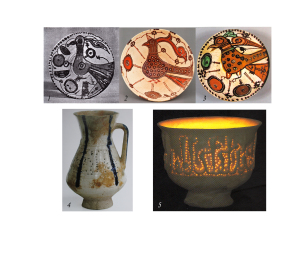The State Historical Museum, Moscow, Russia
E-mail: embold@mail.ru
Keywords: glazed pottery, kashi, import, trade, Byzantium, Khazar Khaganate, Rus, Golden Horde.
The article focuses on the analysis of glazed ware imported into the southern regions of Russia from the Early Middle Ages to the Golden Horde period. The author studied most common types of glazed ware and their sources. In order to compare, the paper considers the groups of ware brought to the Pontic and the Volga River regions. From the 7th century in the northern Pontic region, vessels produced in Constantinople appeared. Various groups of Byzantine pottery were recorded there till the beginning of the Golden Horde period. In the Caspian region, glazed ware appeared not earlier than the middle-late 9th – early 10th century coming there from Central Asia and the Middle East. In the 11th century, there were no significant changes in the sources and number of imported products in the Pontic, while the Volga River region falls under the influence of the North-Eastern Caucasus, Transcaucasia and the Middle East (mainly Iran). In the second half – end of the 12th century, the Volga region was becoming one of the key areas points in the trade of kashi ware of Middle Eastern origin. In the 14th century, Byzantine ware first appeared there. The same period was marked with the rise in local pottery production in the Pontic and Azov littoral which contributed to the spread of these products throughout Eastern Europe.
DOI: 10.31857/S086960630015281-8








